 |
 |
 |
| |
HDV Prevalence 16% in French Group With HBV and HIV
|
| |
| |
EACS 2023, October 18-21, 2023, Warsaw
Mark Mascolini
Among 2406 people in France with HIV infection, chronic HBV infection, and known HDV serology, 376 (15.6%) screened positive for the dangerous hepatitis delta virus (HDV), according to a nationwide Dat'AIDS analysis [1]. Researchers calculated an HDV incidence of 0.12 per 100 person-years and urged HDV testing for everyone with HBV.
HDV infection, the most severe form of chronic viral hepatitis, affects an estimated 5% to 10% of people with HBV globally, according to Dat'AIDS (https://www.dataids.org/) researchers who presented the new findings from France. HDV prevalence may be even higher in people also infected with HIV. The researchers used data from the Dat'AIDS cohort to estimate prevalence, incidence, and risk factors for HDV infection in HIV/HBV-coinfected people in this nationwide cohort, which represents about half of people with HIV in care in France.
In this retrospective analysis, the investigators estimated HDV prevalence in people with HIV and chronic HBV and a known HDV serology result. They estimated HDV incidence-the new infection rate-in people with at least one consecutive HDV serology after an HDV-negative serology.
Among HIV-positive Dat'AIDS members with HBV serology, 3737 (6%) had chronic HBV infection. Of those 3737, 2406 had known HDV serology, and 376 with serology (15.6%) were HDV antibody-positive. Among people who inject drugs in Dat'AIDS, the study team calculated an HDV prevalence of 56.5%, and among people with HCV coinfection a prevalence of 42.4%.
Multivariate analysis identified six factors that boosted odds of HDV infection at the following adjusted odds ratios (aOR) (and 95% confidence intervals):
- Male gender: aOR 1.53 (1.08 to 2.18, P = 0.02)
>
- Country of origin in Africa: aOR 2.80 (1.73 to 4.54, P < 0.001)
- Country of origin in Eastern Europe: aOR 3.25 (1.56 to 6.77, P = 0.002)b
- Heterosexual HIV risk (vs MSM): aOR 1.82 (1.11 to 2.99, P = 0.02)
- Drug injecting HIV risk (vs MSM): aOR 7.05 (3.89 to 12.78, P < 0.001)
- HCV coinfection: aOR 2.81 (1.72 to 4.60, P < 0.001)
To estimate HDV incidence the researchers assessed 1827 consecutive serologies covering 21,006 person-years of follow-up. That search yielded 27 HDV superinfections to give an incidence of 0.12 per 100 person years (95% confidence interval 0.008 to 0.18). Incident HCV proved more frequent with older age at HDV diagnosis (48.0 vs 37.3 years, P < 0.001).
The investigators warned clinicians that HDV infection can occur during follow-up of people with HBV. They believe underdiagnosis of HDV infection shows that diagnosis guidelines should be followed strictly: Everyone with HBV infection should have HDV serology [2]. And people with ongoing exposure to HDV need annual HDV serology.
Referencesbr clear="all" />
1. Alfaiate D, Pradat P, Poizot-Martin I, et al. Prevalence and incidence of hepatitis D virus infection in HIV-HBV coinfected patients in the French nationwide Dat'AIDS cohort. EACS 2023, October 18-21, 2023, Warsaw. Abstract RA1.06.br clear="all" />
2. National Library of Medicine. Diagnosis and Management of Hepatitis Delta Virus Infection. Dig Dis Sci. 2023;68:3237-3248. https://www.ncbi.nlm.nih.gov/pmc/articles/PMC10374831/ doi: 10.1007/s10620-023-07960-y
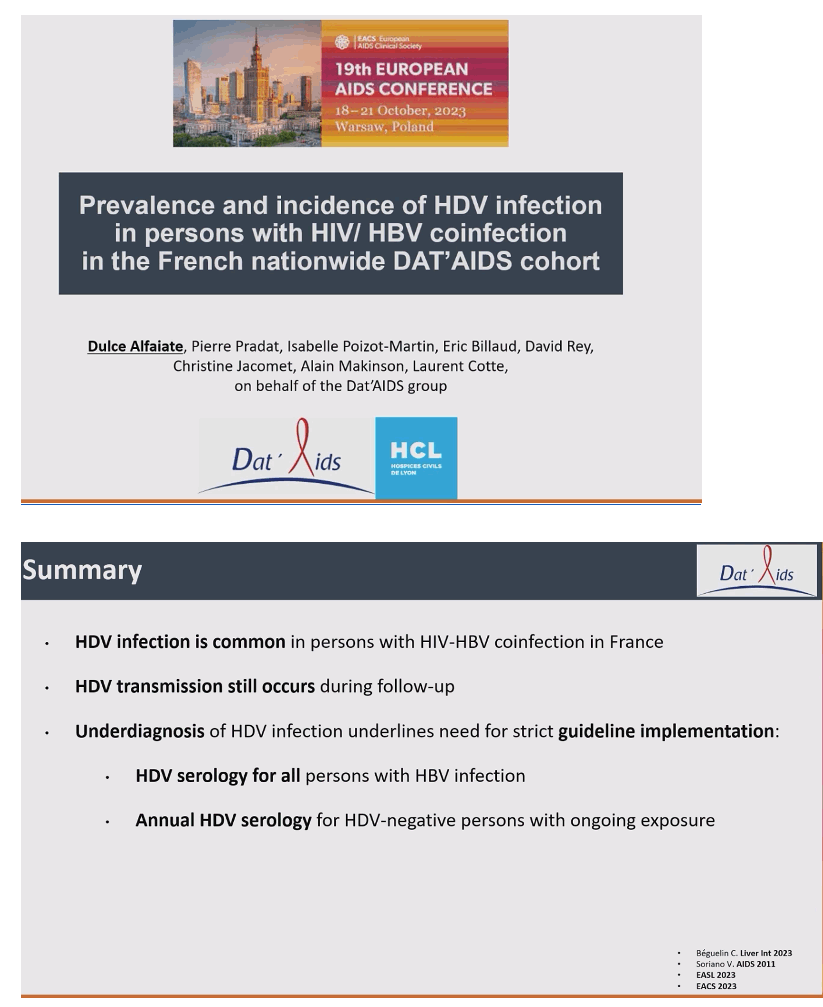
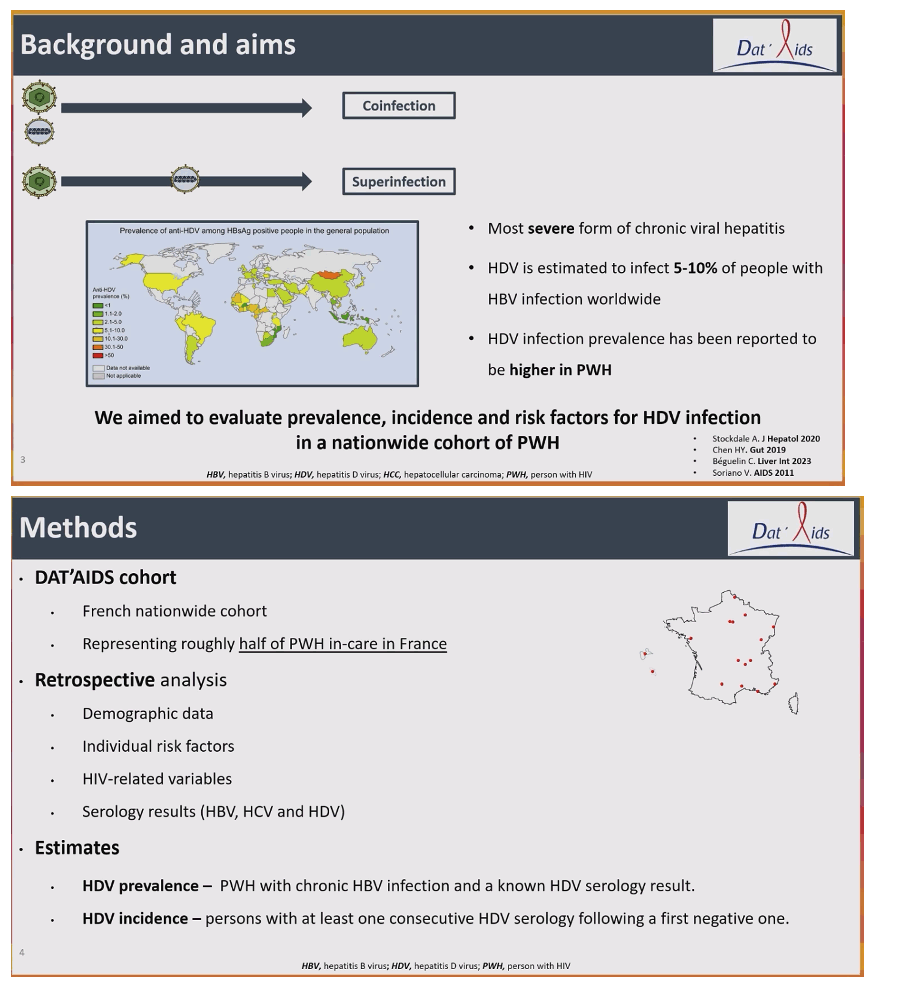
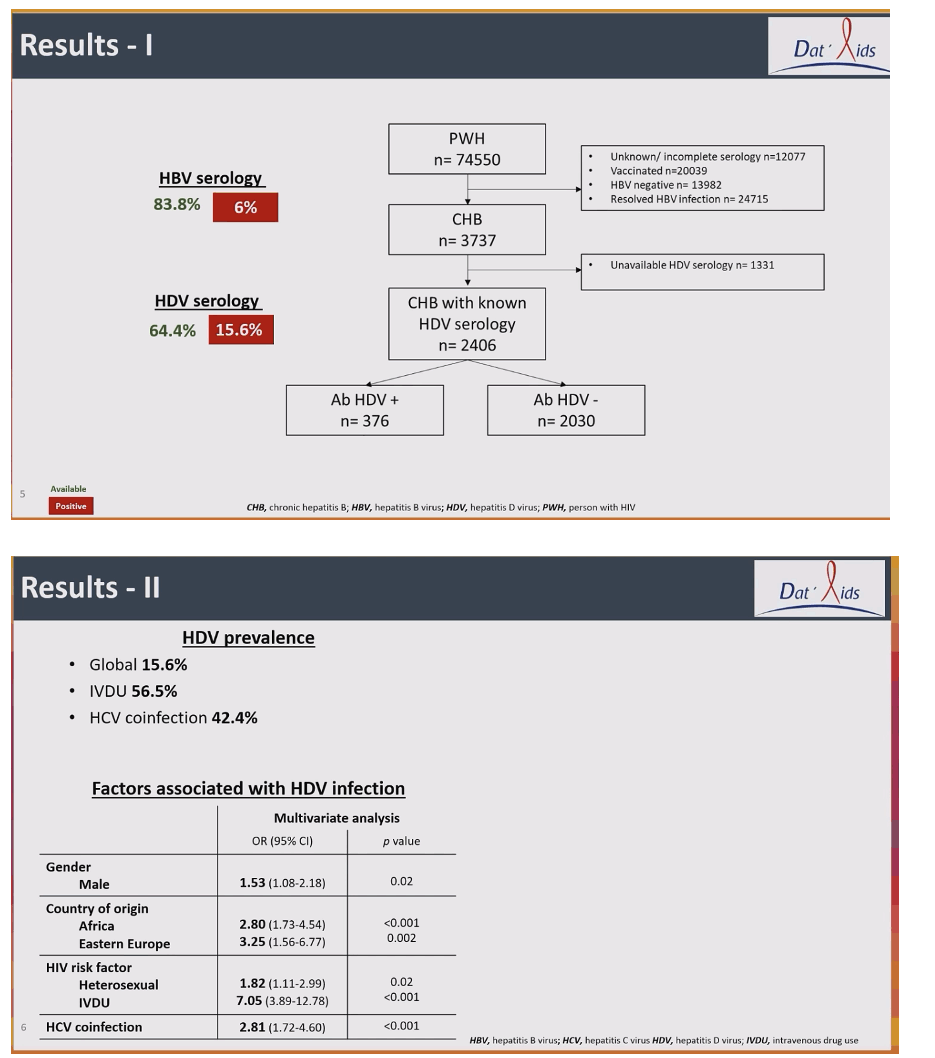
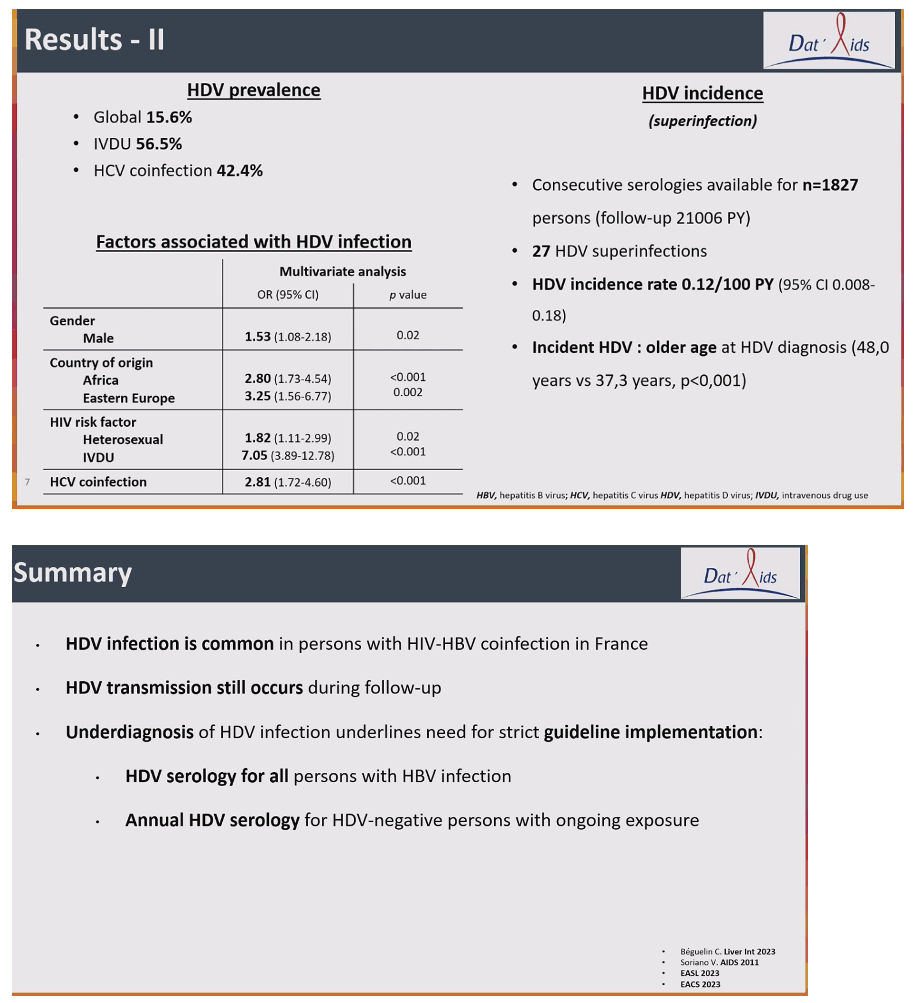
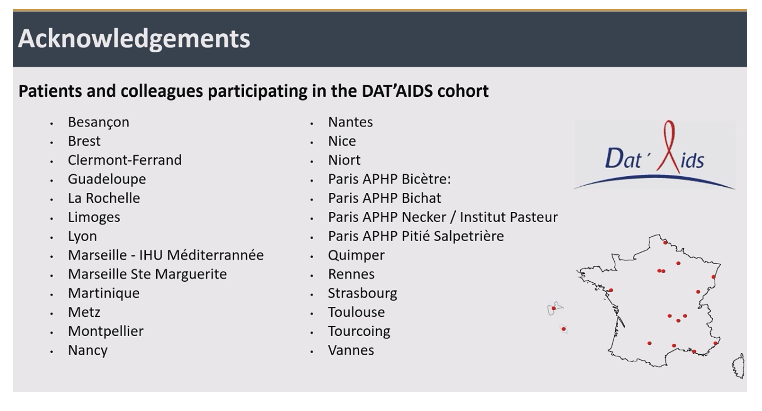
|
| |
|
 |
 |
|
|